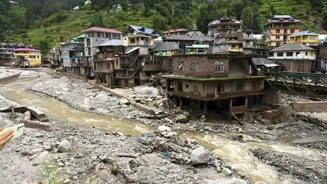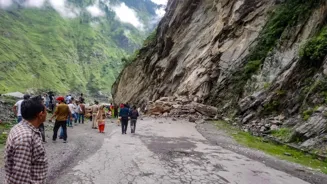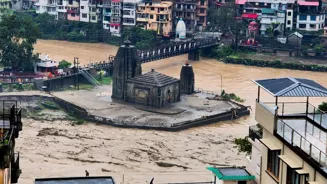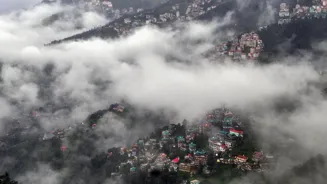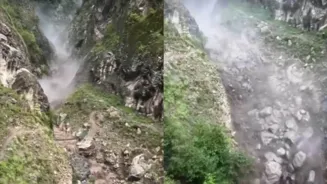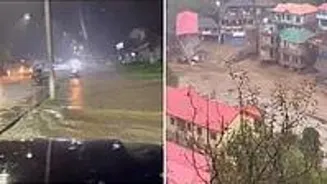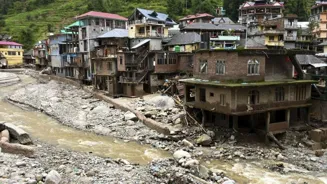What is the story about?
The monsoon has once again created havoc in Himachal Pradesh, leaving a trail of destruction that feels all too familiar. Nearly 200 lives have been lost so far this season, and the impact is being felt deeply across both the hills and
the economy.
In places like Shimla and Manali, the bustling charm of peak tourist season has been replaced by an eerie stillness. Hotels, homestays and roadside eateries all wear a deserted look. Kufri, a popular tourist spot, has shuttered shops and silent streets. Some shopkeepers say the mood is no different from the pandemic days.
Resident Ishwar Lal Chandel points to a more nuanced problem. “Videos of flash floods in Mandi and Kullu go viral within minutes. But sometimes, they’re misreported as being from Shimla and that
creates panic,” he says. “There’s been no damage here, yet tourists are cancelling trips.” The ripple effects have reached farms and orchards too. Restaurants and dhabas that once sourced vegetables and apples in bulk are barely placing any orders now. “This is worse than the Covid lockdown,” Chandel adds, urging the state government to intervene.
The financial strain is visible on the ground. Rajiv Kumar, a local taxi driver, says he's struggling to find even one customer a day. “Forget profits we’re not even making our daily
wage.” For Surjeet Singh, who runs a clothing store in Kufri, even paying the ₹25,000 monthly rent is becoming unmanageable.
A few tourists who braved the weather, like Payal and Muskan from Lucknow, say the rain has kept them indoors. “There’s no danger here, but we’re unable to explore anything. It’s disappointing.”
Tourism accounts for over 7% of Himachal’s GDP and sustains thousands of livelihoods. But the damage this year has crippled both travel and transportation. Frequent landslides have hit the state’s key national
highways. According to the state disaster management authority, 199 people have died so far, with nearly half of the fatalities caused by flash floods, landslides, falling debris, snakebites, and drowning.
Himachal is hurting not just from nature’s fury, but from the silence that follows when its people are left to fend for themselves.
In places like Shimla and Manali, the bustling charm of peak tourist season has been replaced by an eerie stillness. Hotels, homestays and roadside eateries all wear a deserted look. Kufri, a popular tourist spot, has shuttered shops and silent streets. Some shopkeepers say the mood is no different from the pandemic days.
Resident Ishwar Lal Chandel points to a more nuanced problem. “Videos of flash floods in Mandi and Kullu go viral within minutes. But sometimes, they’re misreported as being from Shimla and that
The financial strain is visible on the ground. Rajiv Kumar, a local taxi driver, says he's struggling to find even one customer a day. “Forget profits we’re not even making our daily
A few tourists who braved the weather, like Payal and Muskan from Lucknow, say the rain has kept them indoors. “There’s no danger here, but we’re unable to explore anything. It’s disappointing.”
Tourism accounts for over 7% of Himachal’s GDP and sustains thousands of livelihoods. But the damage this year has crippled both travel and transportation. Frequent landslides have hit the state’s key national
Himachal is hurting not just from nature’s fury, but from the silence that follows when its people are left to fend for themselves.
Do you find this article useful?
